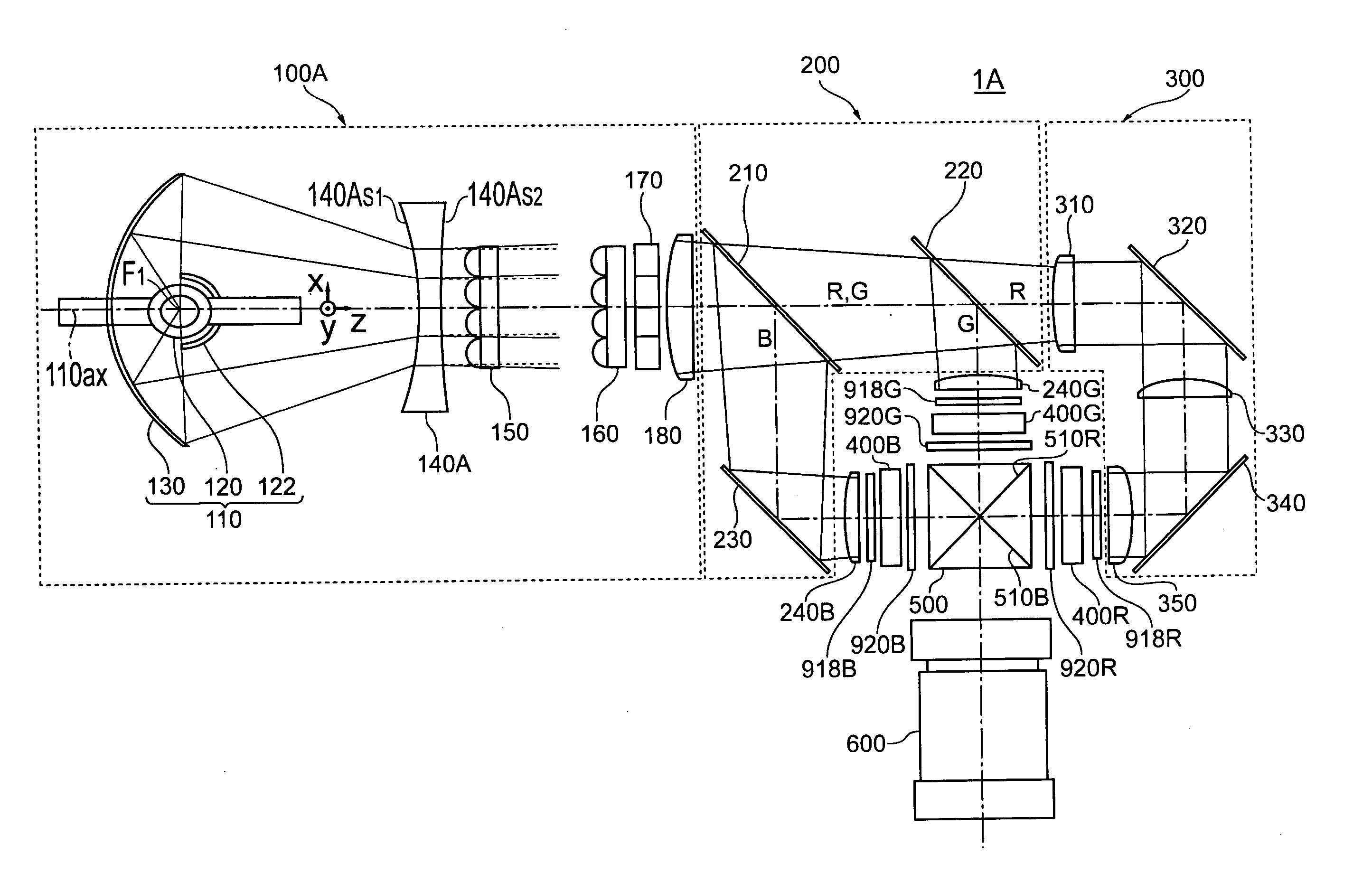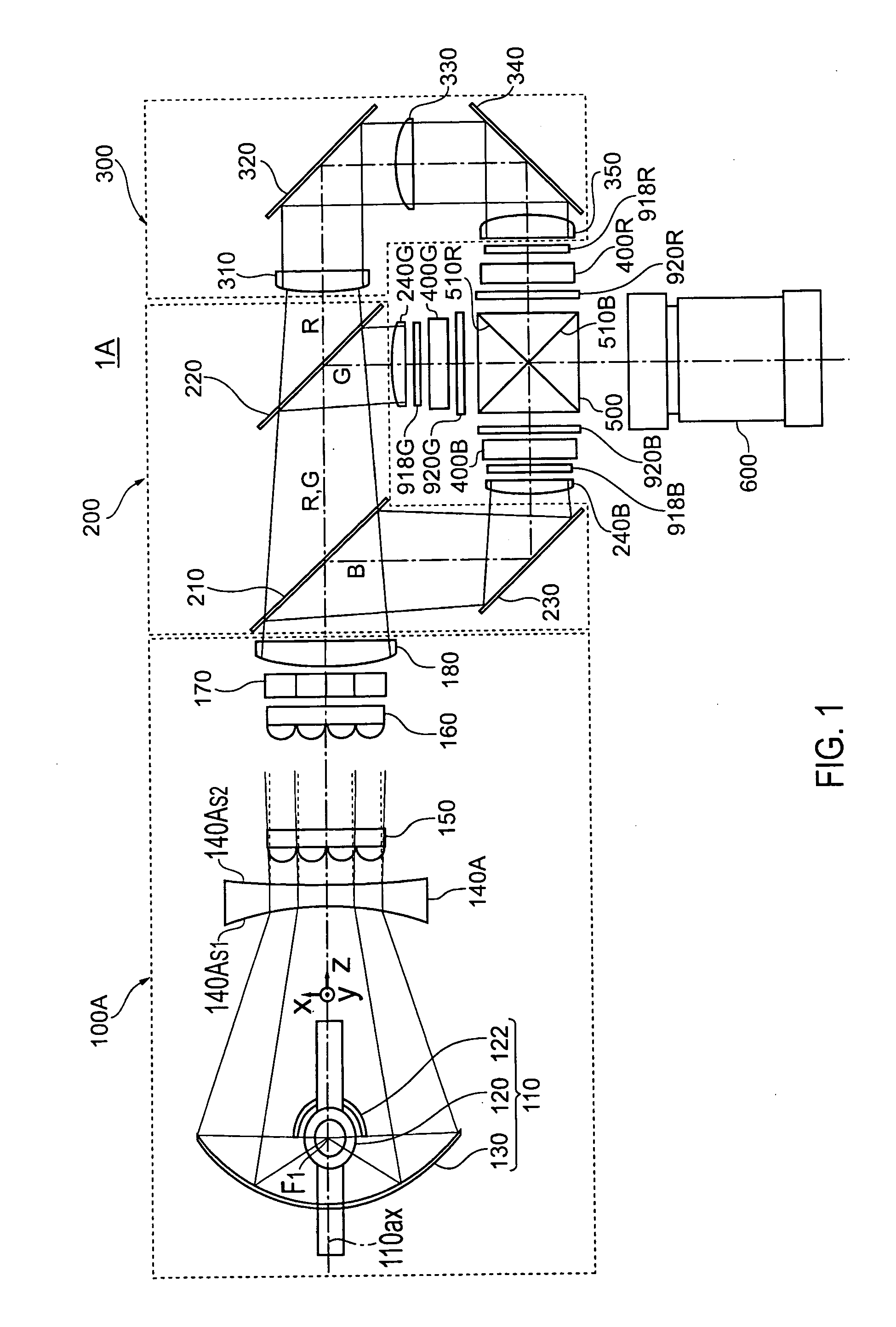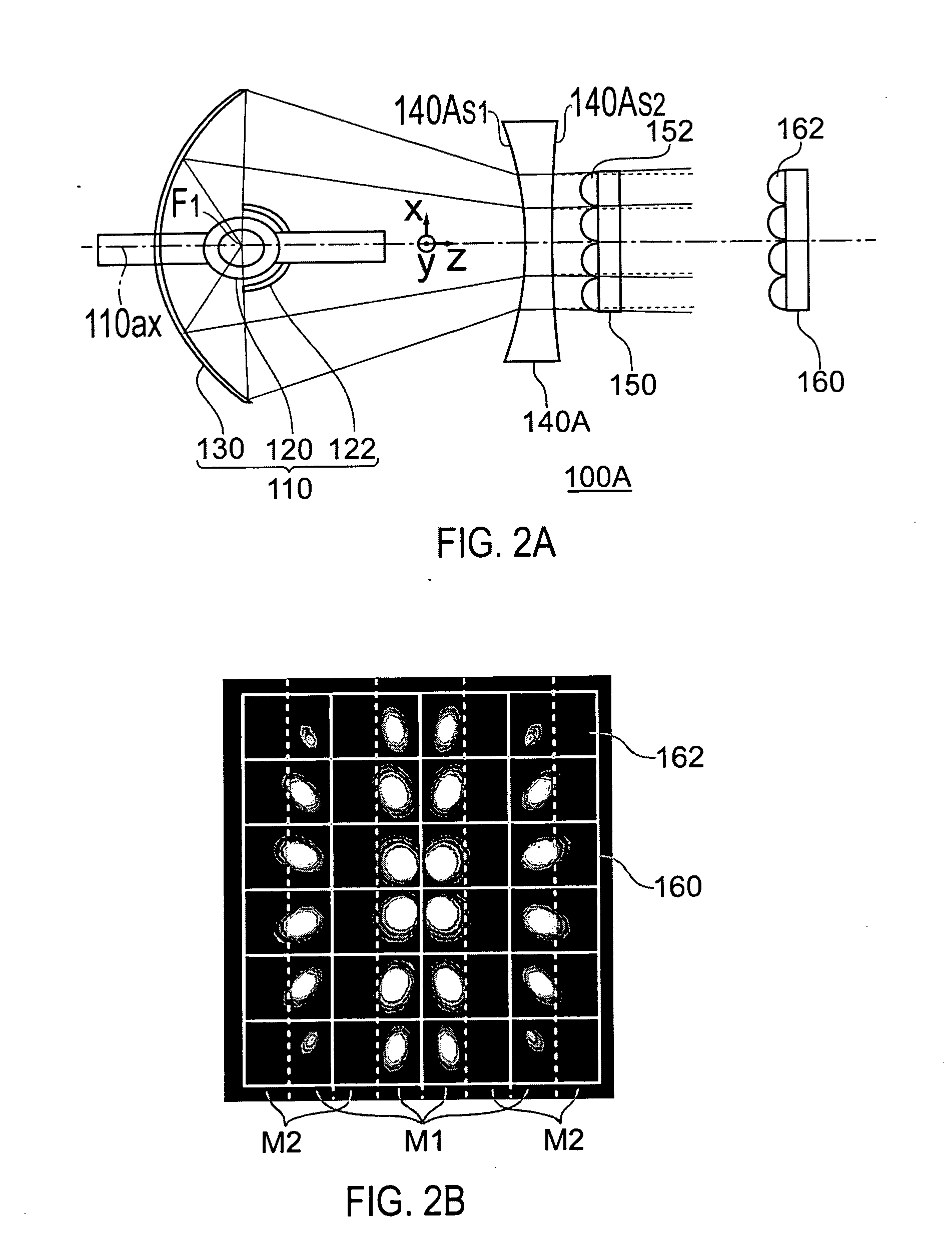Lighting device and projector equipped with the same
a technology of projector and light source, which is applied in the direction of projector, color television details, instruments, etc., can solve the problems of unable and thereby reducing so as to reduce light loss in quantity and improve the efficiency of utilization of illuminating luminous flux
- Summary
- Abstract
- Description
- Claims
- Application Information
AI Technical Summary
Benefits of technology
Problems solved by technology
Method used
Image
Examples
first embodiment
[0046] First, a projector 1A according to a first embodiment will be described with reference to FIG. 1.
[0047]FIG. 1 is a view showing an optical system in the projector according to the first embodiment when viewed from above. Hereinafter, three directions that intersect with each other at right angles are referred to as the z direction (a direction parallel to a light-source optical axis 110ax), the x direction (a direction perpendicular to the z direction and parallel to the sheet surface), and the y direction (a direction perpendicular to the sheet surface).
[0048] As is shown in FIG. 1, the projector 1A according to the first embodiment includes a lighting device 100A, a color-separating optical system 200, a relay optical system 300, three liquid crystal devices 400R, 400G, and 400B used as electro-optic modulating devices, a crossed dichroic prism 500, and a projection optical system 600. Components forming the respective optical systems are disposed in almost a horizontal d...
second embodiment
[0092] A lighting device 100B according to a second embodiment will now be described with reference to FIG. 5. FIG. 5 is a view used to describe the lighting device according to the second embodiment. In FIG. 5, like members are labeled with like reference numerals with respect to FIG. 2(a) and a detailed description thereof is omitted.
[0093] As is shown in FIG. 5, the lighting device 100B according to the second embodiment is characterized in that a concave surface 150BS1 comprising a spherical surface is formed on the light-incident surface of the first lens array 150B (the surface opposite to the surface where the plural small lenses 152B are formed), and the concave surface 150BS1 is furnished with a function of causing, together with the hyperboloid of revolution 140S1 formed on the light-incident surface of the concave lens 140, an illuminating luminous flux having passed through the light-incident surface of the concave lens 140 to travel along optical paths heading to an ou...
third embodiment
[0098] A lighting device 100C according to a third embodiment will now be described with reference to FIG. 6. FIG. 6 is a view used to describe the lighting device according to the third embodiment. In FIG. 6, like members are labeled with like reference numerals with respect to FIG. 2(a) and a detailed description thereof is omitted.
[0099] As is shown in FIG. 6, the lighting device 100C according to the third embodiment is characterized in that a second concave lens 142 having a concave surface 142S2 is disposed between the concave lens 140 and the first lens array 150, and the concave surface 142S2 is furnished with a function of causing, together with the hyperboloid of revolution 140S1 formed on the light-incident surface of the concave lens 140, an illuminating luminous flux having passed through the light-incident surface of the concave lens 140 to travel along optical paths heading to an outer side than optical paths parallel to the light-source optical axis 110ax, while cau...
PUM
 Login to View More
Login to View More Abstract
Description
Claims
Application Information
 Login to View More
Login to View More - R&D
- Intellectual Property
- Life Sciences
- Materials
- Tech Scout
- Unparalleled Data Quality
- Higher Quality Content
- 60% Fewer Hallucinations
Browse by: Latest US Patents, China's latest patents, Technical Efficacy Thesaurus, Application Domain, Technology Topic, Popular Technical Reports.
© 2025 PatSnap. All rights reserved.Legal|Privacy policy|Modern Slavery Act Transparency Statement|Sitemap|About US| Contact US: help@patsnap.com



